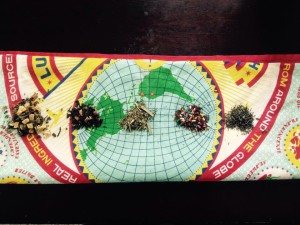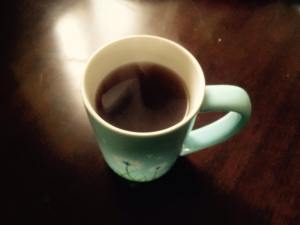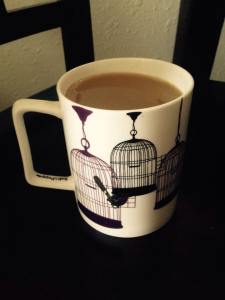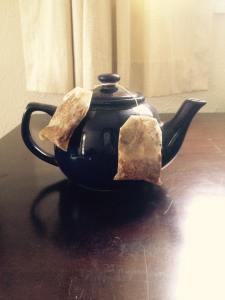Every morning, thick fog has been rolling into the small valley I call home. This is a sure sign that winter is approaching, and with it comes with the insatiable craving for warm, comforting drinks. Tea is my beverage of choice. Depending on the brew, it has the power to jolt the senses, clear up sinuses, provide relief to a sweet tooth, or lull to sleep. However, for such an ubiquitous drink, tea can be surprisingly intimidating. With elitists demanding that one use only glacier water and bring it to five degrees short of a rolling boil, to purists insisting that adding anything to a cup of tea is criminal, it can be difficult to know what exactly constitutes a perfect cup. The following is a guide on how to do just that, no matter one’s preference.
1. Decide on the Desired Effect
The first step in making a great cup of tea is to choose whether we want something to wake us up the during morning and afternoon doldrums, or whether we want something more soothing. The caffeine levels in tea will help us gauge this. Black tea has the highest amount of caffeine, and this includes blends such as English Breakfast, Earl Grey, and the classic Orange Pekoe. Black tea produces a dark, full-bodied brew apt to snap anyone out of a brain fog. Green tea has less caffeine, but still provides some stimulation. It has a more delicately roasted flavour and is often paired with jasmine flowers. Next is white tea, which has the lightest flavour and is sometimes paired with dried fruits such as apple or peach. These teas all come from the same plant, of which there are two varieties: Camelia sinensis or Camelia assamica. (It’s okay if your eyes glazed over at the sight of Latin names, just know that it’s the roasting process which determines whether the tea is white, green or black.)
There is also a red tea, or Rooibos, which comes from an altogether different plant. (Aspalathus linearis, for those of you who do enjoy Latin names) It’s popular for being caffeine-free and having a mildly sweet flavour.
Finally, in the caffeine-free realm, we have herbal teas, which have been made with various ingredients since close to forever ago. Some common ingredient parings include chamomile with valerian (for frayed nerves), eucalyptus with juniper berry (for sinus afflictions), and ginger with mint (for tummy issues). With herbal teas, the only precaution is to look up ingredients before consuming them, especially if one has a medical condition, takes regular medication, or is pregnant. This is because certain herbs themselves have medicinal qualities, and can create undesirable interactions.

Pictured here: white, black, herbal, red, and green tea. (Yes, those are sprinkles.)
2. Choose to Hang Loose or Bag it Up
Now that we know which type of tea we’d like. we need to choose the format. While it may be less intimidating to buy an ubiquitous box of Red Rose tea, loose leaf tea definitely has its merits. We can choose the amount we want to steep much easier this way. From personal experience, I usually steep between 1 1/2 – 2 Tbsp of tea for one cup. I tend to add more if it is a light tea, such as white or herbal, and less if it’s a green or black tea. Loose leaf tea also permits us to make our own blends. The chief reason to consider choosing loose leaf over pre-bagged, however, is the amount of packaging one saves. Between the cardboard box, the individual packaging, and the bag itself, it’s much simpler to re-use a metal strainer that can be rinsed after each use.

My tried and tested tea strainers have gotten me through many an all-nighter.
3. Steep it up
After the kettle screams, I personally prefer to wait a couple of minutes before I pour the water (if I have the time.) This is because boiling water can sometimes “cook” the tea leaves, imparting a bitter taste. This seems to especially be the case with the usually mellow white and green teas. Equally important is the length of time we steep the tea. Black teas and green teas are usually ready after two minutes, unless we prefer a stronger, bitter taste. White, red and herbal teas can range from two to five minutes. This will largely depend on personal preference and whether one is going to add anything to their brew.

This steamy black tea is good to gulp.
4. Add-in Until the Tea is Appealing
Finally, we have a nice steaming cup of tea. Some purists would end their guides here, but adding milks or sweeteners is also perfectly valid. With experience, I’ve found that adding milk (whether dairy, or in my case, almond) to certain herbal blends and green teas or white teas is not recommended. Herbal teas sometimes contain citrus, which can curdle the milk. As for green and white teas, it’s simply a matter of preference. Sweeteners can include things such as sugar (of course), honey, or agave nectar, if avoiding animal products. This, too, is according to taste.

A sweet and milky Rooibos tea for those after-dinner sugar cravings.
5. Do not re-steep
Treat yourself to a freshly steeped cup, you’ve earned it. Save the used, soggy tea for the compost.

Or use it to make some modern art.
As we’ve seen, making the perfect cup of tea has more to do with discovering our personal tastes than submitting to rigorous rules. Stay tuned for the poem on tea-making, and happy steeping!




